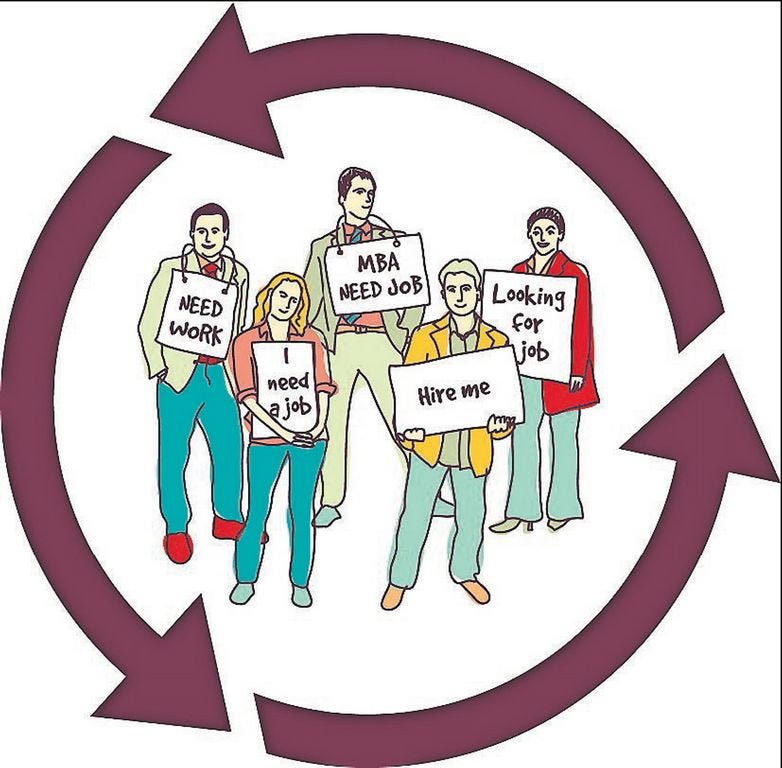
Long-term unemployment (defined by the Bureau of Labor Statistics as unemployment lasting 26 weeks or more) can be an incredibly destructive force in a career. It’s easy to get caught up in the vicious cycle — the longer you spend without a job, the harder it becomes to get hired for a new one.
Henry Farber is keenly aware of this problem. The Hughes-Rogers professor of economics at Princeton University, where he’s also the director of the Industrial Relations Section, has had his research on long-term unemployment published in the Economic Policy Review, the Quarterly Journal of Economics and many other publications.
Monster caught up with Farber to talk about the challenges faced by the long-term unemployed, as well as what they can do to get their careers back in gear.
Q. What are some of the root causes of long-term unemployment?
A. It depends on the state of the economy … It’s more productive to talk about what makes it easy to find a job, which is that you have skills that other employers want, or that you’re willing to move to take a job. But some people are fixed in place, and the older unemployed tend to have longer spells of unemployment, and older job losers tend to take longer to find work. It’s really a whole range of things, but it’s very sensitive to the state of the labor market. So in the depths of the Great Recession (roughly early 2008 to mid-2009), the rate of long-term unemployment just shot up. And frankly, it’s stayed pretty elevated even through the recovery.
Q. What kinds of obstacles do the long-term unemployed face that make it difficult to get their careers back on track?
A. Many people argue that the skills you have to offer atrophy — that if you’ve been unemployed a year, employers worry that you don’t have the skills you need to compete. Or if you’re unemployed a long time, employers might take that as a signal that you’re not really a go-getter or not very well qualified. But you would think that wouldn’t be so relevant in a deep recession like the Great Recession, because employers can say, “Well, the guy’s been unemployed a long time. I’m not going to make too much of that, because hardly anyone’s finding work, it’s just a terrible economy.”
But in a strong economy or stronger labor market — maybe more like what we have now — if you’ve been unemployed a long time, the employer says, “Well, the economy’s strong, and if he was a go-getter he would have found a job.”
Q. What’s the situation right now, post-recession? Is the labor market improving?
A. I would say the labor market as a whole is getting better, but the rate at which newly unemployed people can find work is higher than it’s been in a long time. The unemployment rate is relatively low, but the fraction of unemployed who are long-term unemployed is higher than it’s been in any pre-recession period, and remains high.
So there are some warning signs that the benefits of the expansion are being shared unequally.
Q. What can the long-term unemployed do to create some forward momentum in their careers?
A. Ultimately, I think it’s about a strategy of job search. … My understanding is there’s an awful lot of what I’ll call mechanized first-stage screening of resumes. What they’re looking for are particular keywords, and if the job applicants understood that screening process better, they could tailor how they present information on who they are in ways that could be more productive.
It’s easy to get lost in the noise. But workers need to think carefully about what skills they have to offer, what jobs they should apply for. If they need to get more skills, they should figure out ways to get more skills. … And it might even be that people need to be willing to move to find work in ways that they haven’t.
—
Most hot jobs don’t pay well
CNN Money reports that most of the 10 projected fastest-growing jobs pay less than the typical annual wage of $35,540. According to the Bureau of Labor Statistics, jobs like personal care aides, home health aides and nursing assistants are hot but pay about $12 an hour. Retail and food service jobs are also fast-growing but pay even less. — More Content Now
CNN Money reports that most of the 10 projected fastest-growing jobs pay less than the typical annual wage of $35,540. According to the Bureau of Labor Statistics, jobs like personal care aides, home health aides and nursing assistants are hot but pay about $12 an hour. Retail and food service jobs are also fast-growing but pay even less. — More Content Now
Most hot jobs don’t pay well
This article originally appeared on Crestview News Bulletin: GELBER: Breaking the cycle of long-term unemployment
